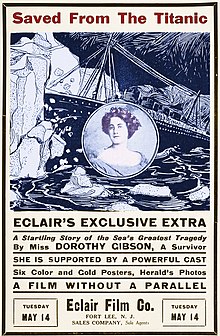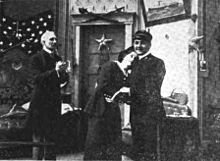
John Jacob Astor IV was an American business magnate, real estate developer, investor, writer, lieutenant colonel in the Spanish–American War, and a prominent member of the Astor family. He was among the most prominent American passengers aboard RMS Titanic and perished along with 1,500 people when the ship sank on her maiden voyage. Astor was the richest passenger aboard the RMS Titanic and was thought to be among the richest people in the world at that time, with a net worth of roughly $87 million when he died.

Edward John Smith was a British sea captain and naval officer. In 1880, he joined the White Star Line as an officer, beginning a long career in the British Merchant Navy. Smith went on to serve as the master of numerous White Star Line vessels. During the Second Boer War, he served in the Royal Naval Reserve, transporting British Imperial troops to the Cape Colony. Smith served as captain of the ocean liner Titanic, and went down with the ship when she sank on her maiden voyage.

In Nacht und Eis, also called Der Untergang der Titanic and Shipwrecked in Icebergs in the US, is a 1912 German silent adventure-disaster drama film about the sinking of RMS Titanic. This is the second surviving film about the Titanic disaster.

Violet Constance Jessop was an Irish-Argentine ocean liner stewardess and nurse in the early 20th century. Jessop is best known for having survived the sinking of both the RMS Titanic in 1912 and her sister ship the HMHS Britannic in 1916, as well as having been onboard the eldest of the three sister ships, the RMS Olympic, when it collided with the British warship HMS Hawke in 1911.

Commander Charles Herbert Lightoller, was a British mariner and naval officer who was the second officer on board the RMS Titanic. During the ship's sinking, and as the officer in charge of loading passengers into lifeboats on the port side, Lightoller strictly enforced the women and children only protocol, not allowing any male passengers to board the lifeboats unless they were needed as auxiliary seamen. He was the most senior officer to survive the disaster. Lightoller served as a commanding officer in the Royal Navy during World War I and was twice decorated for gallantry. During World War II, in retirement, he voluntarily provided his personal yacht, the Sundowner, and sailed her as one of the "little ships" in the Dunkirk evacuation.

Robert Hichens was a British sailor who was part of the deck crew on board the RMS Titanic when she sank on her maiden voyage on 15 April 1912. He was one of seven quartermasters on board the vessel and was at the ship's wheel when the Titanic struck the iceberg. He was in charge of Lifeboat #6, where he refused to return to rescue people from the water due to fear of the boat being sucked into the ocean with the huge suction created by Titanic, or swamped by other floating passengers. According to several accounts of those on the boat, including Margaret Brown, who argued with him throughout the early morning, Lifeboat 6 did not return to save other passengers from the waters. In 1906, he married Florence Mortimore in Devon, England; when he registered for duty aboard the Titanic, his listed address was in Southampton, where he lived with his wife and two children.
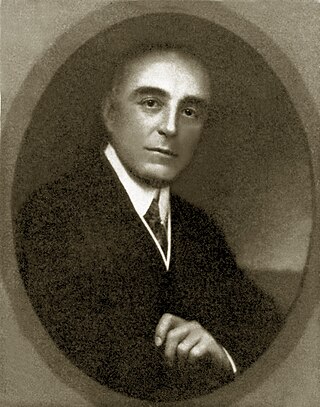
Pierre Ernest Jules Brulatour was a pioneering executive figure in American silent cinema. Beginning as American distribution representative for Lumiere Brothers raw film stock in 1907, he joined producer Carl Laemmle in forming the Motion Picture Distributing and Sales Company in 1909, effectively weakening the stronghold of the Motion Picture Patents Company, headed by Thomas Edison, a large trust company that was then monopolizing the American film industry through contracts with hand-picked, established studios. By 1911 Brulatour was president of the Sales Company. He was a founder of the Universal Film Manufacturing Company, later known as Universal Pictures.

Dorothy Gibson was an American actress, socialite and artist's model, active in the early 20th century. She survived the sinking of the Titanic and starred in the first motion picture based on the disaster.

James Paul Moody was a British sailor, who served as Titanic's sixth officer. He died when the ship sank on her maiden voyage.
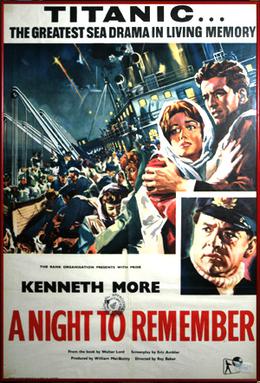
A Night to Remember is a 1958 British historical disaster docudrama film based on the eponymous 1955 book by Walter Lord, and depicts the final night of RMS Titanic, which sank on her maiden voyage after striking an iceberg in 1912. Adapted by Eric Ambler and directed by Roy Ward Baker, the film stars Kenneth More as the ship's Second Officer Charles Lightoller and features Michael Goodliffe, Laurence Naismith, Kenneth Griffith, David McCallum and Tucker McGuire. It was filmed in the United Kingdom and tells the story of the sinking, portraying incidents and people in a documentary-style fashion with considerable attention to detail. The production team, supervised by producer William MacQuitty used blueprints of the ship to create authentic sets, while Fourth Officer Joseph Boxhall and ex-Cunard Commodore Harry Grattidge worked as technical advisors on the film. Its estimated budget of up to £600,000 was exceptional and made it the most expensive film ever made in Britain up to that time. The film's score was written by William Alwyn.

The Titanic has played a prominent role in popular culture since her sinking in 1912, with the loss of over 1,500 of the 2,200 lives on board. The disaster and the Titanic herself have been objects of public fascination for many years. They have inspired numerous books, plays, films, songs, poems, and works of art. The story has been interpreted in many overlapping ways, including as a symbol of technological hubris, as basis for fail-safe improvements, as a classic disaster tale, as an indictment of the class divisions of the time, and as romantic tragedies with personal heroism. It has inspired many moral, social and political metaphors and is regularly invoked as a cautionary tale of the limitations of modernity and ambition.
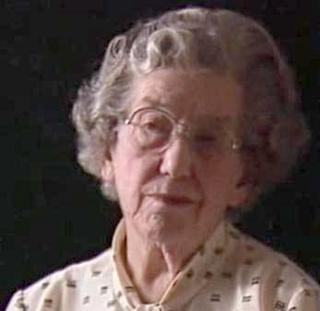
Eva Miriam Hart MBE was a British woman who was one of the last remaining survivors of the sinking of RMS Titanic on 14 April 1912.

Edith Haisman was a South African-British woman who was one of the last remaining and oldest survivors of the sinking of RMS Titanic in April 1912. She was the last survivor born in the 19th century, and therefore the last survivor who was a teenager at the time of the sinking, although seven younger survivors outlived her.

RMS Titanic sank on 15 April 1912 in the North Atlantic Ocean. The largest ocean liner in service at the time, Titanic was four days into her maiden voyage from Southampton to New York City, with an estimated 2,224 people on board when she struck an iceberg at 23:40 on 14 April. Her sinking two hours and forty minutes later at 02:20 ship's time on 15 April, resulted in the deaths of more than 1,500 people, making it one of the deadliest peacetime maritime disasters in history.
A total of 2,240 people sailed on the maiden voyage of the Titanic, the second of the White Star Line's Olympic-class ocean liners, from Southampton, England, to New York City. Partway through the voyage, the ship struck an iceberg and sank in the early morning of 15 April 1912, resulting in the deaths of 1,517 passengers and crew.

Titanic Lifeboat No. 1 was a lifeboat from the steamship Titanic. It was the fifth boat launched to sea, over an hour after the liner collided with an iceberg and began sinking on 14 April 1912. With a capacity of 40 people, it was launched with only 12 aboard, the fewest to escape in any one boat that night.

Lifeboats played a crucial role during the sinking of the Titanic on 14–15 April 1912. The ship had 20 lifeboats that, in total, could accommodate 1,178 people, a little over half of the 2,209 on board the night it sank.
The ocean liner Titanic has been extensively portrayed in films, books, memorials and museums.

Dickinson H. Bishop was an American businessman who traveled on board the ill-fated maiden voyage of the RMS Titanic while on his honeymoon with bride Helen, née Walton. They both survived the sinking of the Titanic on 15 April 1912.
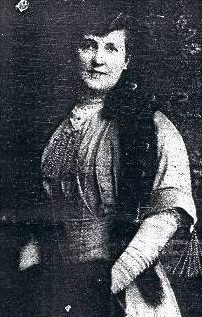
Antoinette "Tony" Flegenheim was a survivor of the sinking of the RMS Titanic.
